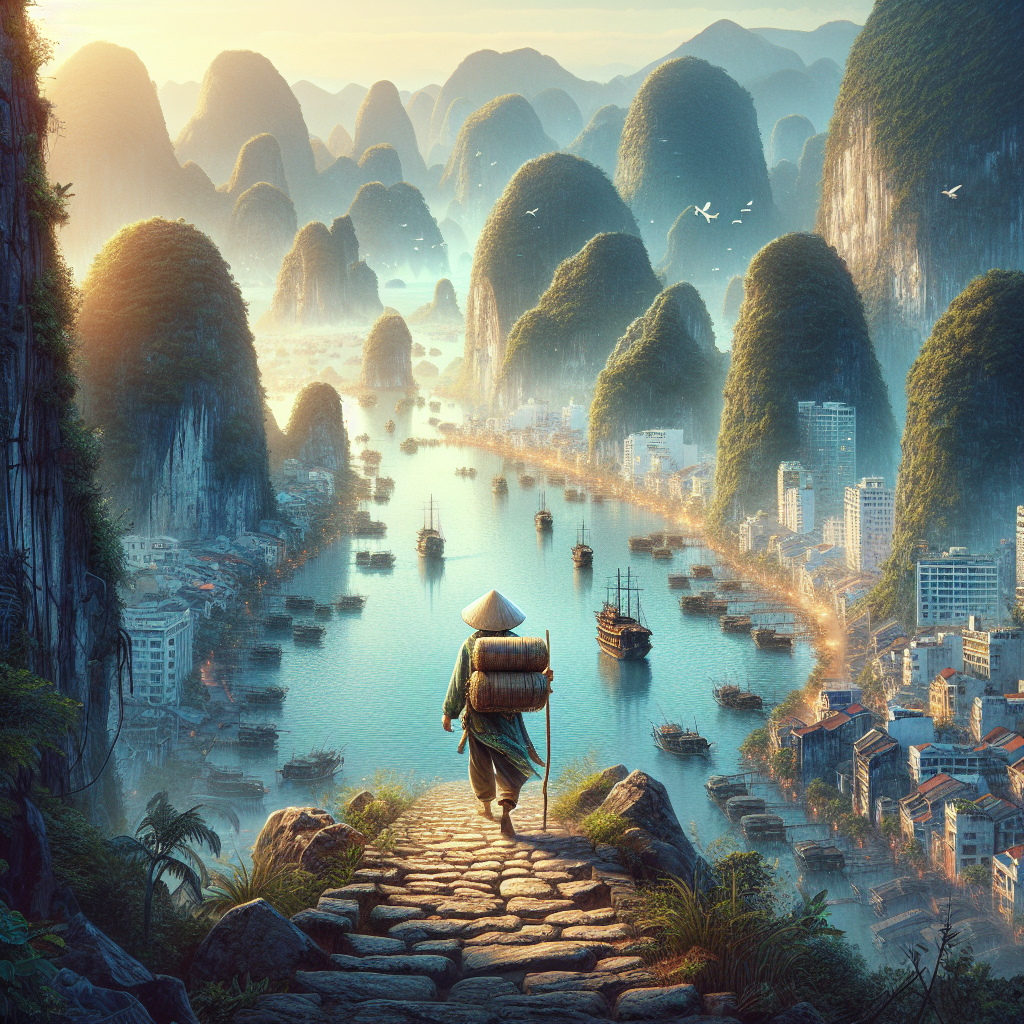From Ha Long Bay to Ho Chi Minh: A Traveler’s Ultimate Vietnam Bucket List
Vietnam, a country with an astonishing mix of natural highlights and cultural diversity, is a destination that’s both introspective and vibrant. Travelers can explore everything from lush landscapes and craggy mountains to bustling cities and quaint villages. From the awe-inspiring Ha Long Bay in the north to the dynamic streets of Ho Chi Minh City in the south, Vietnam offers an enriching journey through history, culture, and natural beauty. Here’s your ultimate bucket list for exploring Vietnam, ensuring you capture the essence of this enchanting country.
Ha Long Bay – The Emerald Dream
Your Vietnamese adventure should unquestionably commence at Ha Long Bay, a UNESCO World Heritage site known for its emerald waters and thousands of towering limestone islands topped with rainforests. A cruise through this magical bay allows for exploration of caves, kayaking in secluded lagoons, and visits to floating villages. The tranquility and natural beauty of Ha Long Bay make it a perfect introduction to the country’s natural wonders.
Hanoi – The Cultural Heartbeat
From Ha Long Bay, make your way to Hanoi, Vietnam’s capital. This city is a beautiful blend of East and West, ancient pagodas sit alongside French colonial buildings. The Old Quarter, with its bustling streets and narrow lanes, is a must-visit for anyone wanting to dive into the local lifestyle. Don’t miss the Hoan Kiem Lake, especially at dawn or dusk, when it becomes a serene gathering place for locals. The Thang Long Water Puppet Theatre and the Ho Chi Minh Mausoleum are also essential stops.
Hue – The Ancient Capital
Traveling down the coast, Hue offers a glimpse into Vietnam’s regal past. This city was the capital of Vietnam for 143 years, and it’s where you can explore the Imperial City, a vast complex of palaces, temples, walls, and gates. The Perfume River adds to the city’s charm, especially with the majestic Thien Mu Pagoda overlooking its banks. A boat trip on the river, particularly at sunset, is both mystical and peaceful.
Hoi An – The Timeless Town
A little further down the coast, Hoi An enchants visitors with its well-preserved Ancient Town, recognized by UNESCO. Walking through its lantern-lit streets is like stepping back in time. The town is also famous for its tailoring services and cooking classes, offering a more hands-on cultural experience. The nearby An Bang Beach provides a relaxing escape, with pristine sands and inviting waters.
Da Nang – The Dynamic Coastline
Da Nang serves as a modern counterpoint to Vietnam’s historical sites. The city is known for its sandy beaches and is rapidly becoming a cultural and commercial hub. The Dragon Bridge breathes fire and water each weekend night, captivating visitors. Just outside the city, the Marble Mountains offer caves, temples, and panoramic views, while the Golden Bridge, held aloft by two giant hands, is an Instagram favorite.
Nha Trang – The Beach Haven
For beach enthusiasts, Nha Trang is unbeatable with its miles of sandy beaches, crystal-clear waters, and vibrant nightlife. The city is also a scuba diving paradise, with its coral reefs teeming with marine life. The Vinpearl Land amusement park and the Po Nagar Cham Towers provide alternate attractions showcasing the area’s leisure and history.
Ho Chi Minh City – The Bustling Metropolis
Previously known as Saigon, Ho Chi Minh City is the business and financial hub of Vietnam. The city is a whirlwind of historic, architectural, and culinary experiences. The War Remnants Museum and the Cu Chi Tunnels offer poignant insights into Vietnam’s recent history, while the Notre-Dame Basilica and the Saigon Opera House reflect the city’s French colonial past. The dynamic energy of the city’s streets, markets, and food scenes are captivating.
The Mekong Delta – The “Rice Bowl”
Finally, no trip to Vietnam would be complete without venturing into the Mekong Delta. This vast maze of rivers, swamps, and islands is home to floating markets, Khmer pagodas, and villages surrounded by rice paddies. Life in the delta moves to the rhythm of the rivers, offering a unique perspective on rural Vietnamese life.
FAQs
Q: What’s the best time to visit Vietnam?
A: Vietnam can be visited year-round, but the best time is typically from February to April and from August to October when the temperatures are more moderate and rainfall is lighter.
Q: Do I need a visa to travel to Vietnam?
A: Most travelers will need a visa to enter Vietnam. Check with the Vietnam embassy or consulate in your country for the most current visa requirements.
Q: Is it safe to travel in Vietnam?
A: Vietnam is generally safe for travelers. As with any destination, it’s advisable to take standard safety precautions, especially in crowded places.
Q: Can I use credit cards, or should I carry cash?
A: Credit cards are widely accepted in cities and tourist areas, but it’s good to carry some cash for small purchases, especially in rural areas.
Q: What should I pack for Vietnam?
A: Light, breathable clothing is recommended, along with a good pair of walking shoes. If you’re traveling in the rainy season, bring a waterproof jacket. Sunscreen and mosquito repellent are also essential.
Vietnam is a country of breathtaking natural beauty, compelling history, and vibrant culture. This guide barely scratches the surface but aims to highlight not-to-miss experiences and destinations. Whether you’re cruising through Ha Long Bay or navigating the busy streets of Ho Chi Minh City, Vietnam promises an unforgettable journey of discovery.
